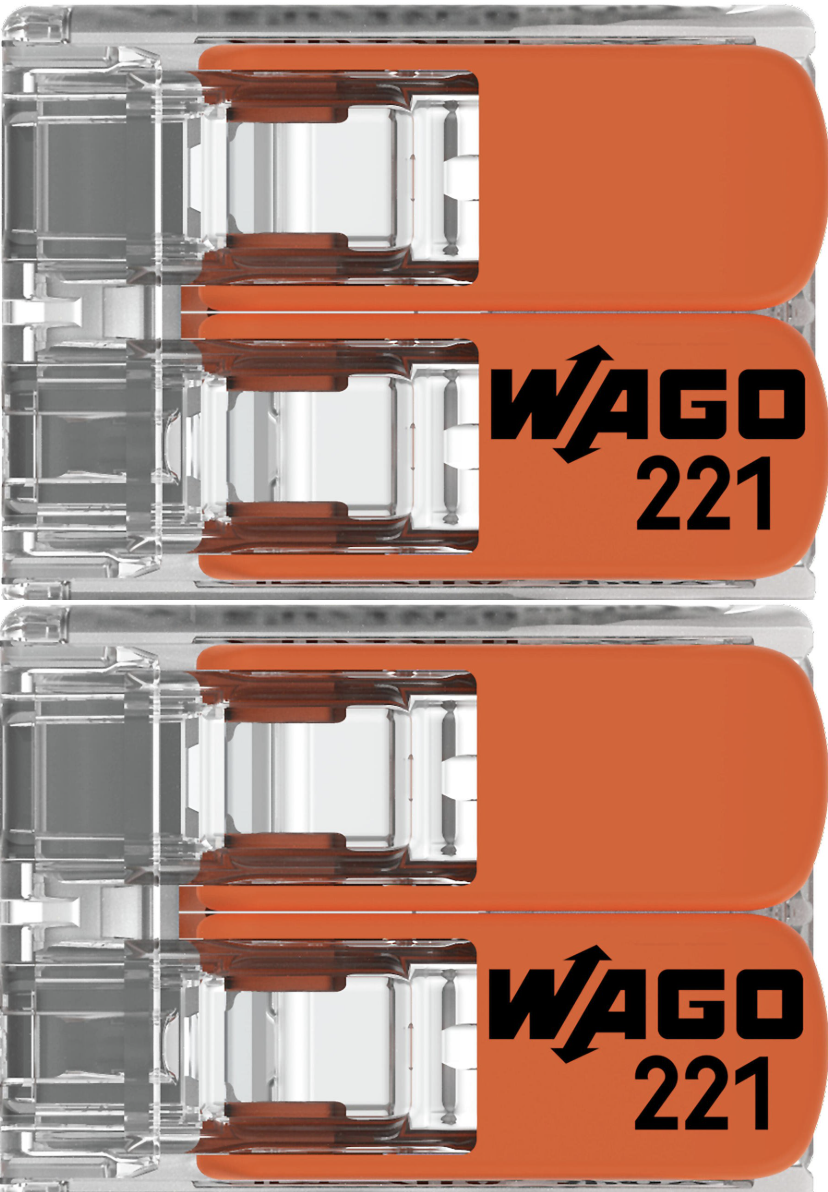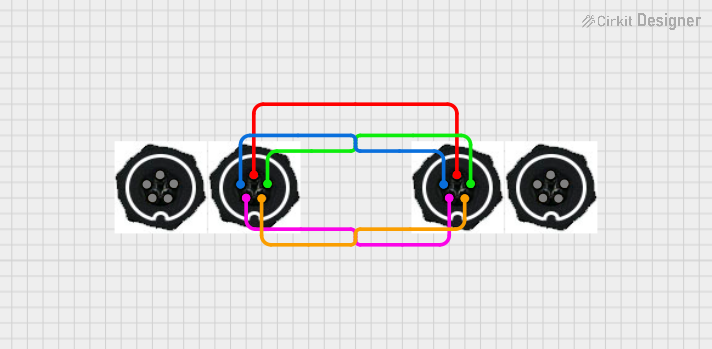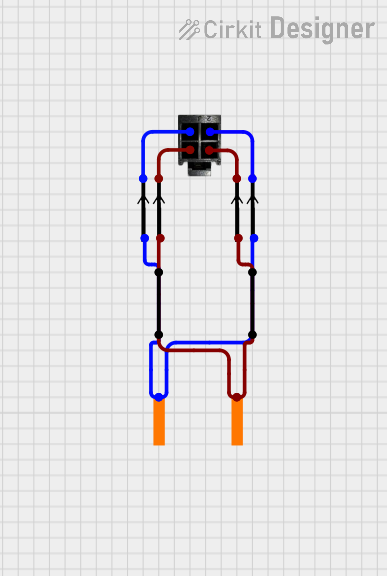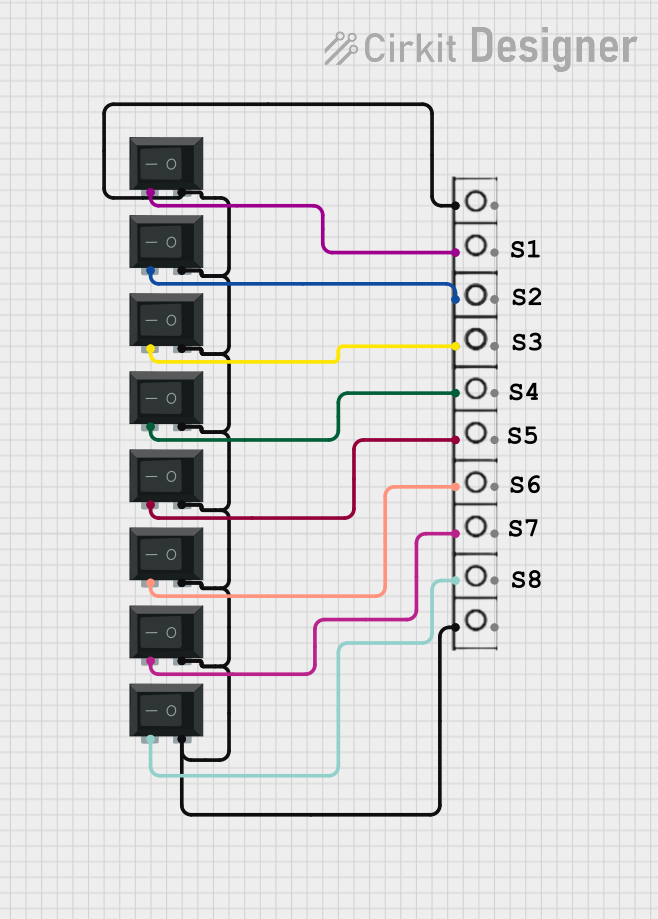
How to Use splicing connector 4: Examples, Pinouts, and Specs

 Design with splicing connector 4 in Cirkit Designer
Design with splicing connector 4 in Cirkit DesignerIntroduction
The Splicing Connector 4 by WAGO is a compact and reliable electrical connector designed to join two or more wires securely. It ensures a stable and durable electrical connection while maintaining the integrity of the circuit. This connector is particularly useful in applications where quick and tool-free wire connections are required.
Explore Projects Built with splicing connector 4

 Open Project in Cirkit Designer
Open Project in Cirkit Designer
 Open Project in Cirkit Designer
Open Project in Cirkit Designer
 Open Project in Cirkit Designer
Open Project in Cirkit Designer
 Open Project in Cirkit Designer
Open Project in Cirkit DesignerExplore Projects Built with splicing connector 4

 Open Project in Cirkit Designer
Open Project in Cirkit Designer
 Open Project in Cirkit Designer
Open Project in Cirkit Designer
 Open Project in Cirkit Designer
Open Project in Cirkit Designer
 Open Project in Cirkit Designer
Open Project in Cirkit DesignerCommon Applications and Use Cases
- Electrical wiring in residential, commercial, and industrial installations
- Connecting wires in lighting systems, control panels, and junction boxes
- Temporary or permanent wire splicing in prototyping and testing setups
- Ideal for use in confined spaces due to its compact design
Technical Specifications
The following table outlines the key technical details of the Splicing Connector 4:
| Parameter | Specification |
|---|---|
| Manufacturer | WAGO |
| Part ID | Splicing Connector |
| Number of Connections | 4 |
| Wire Size Compatibility | 28–12 AWG (solid or stranded wires) |
| Voltage Rating | 450 V AC |
| Current Rating | 32 A |
| Operating Temperature | -35°C to +85°C |
| Housing Material | Polycarbonate (flame-retardant, UL94-V0) |
| Connection Type | Push-in spring technology |
| Dimensions (L x W x H) | 20.5 mm x 18.6 mm x 8.3 mm |
Pin Configuration and Descriptions
The Splicing Connector 4 does not have traditional pins but features four wire entry points. Each entry point corresponds to a single wire connection. The table below describes the wire entry points:
| Entry Point | Description |
|---|---|
| 1 | Wire connection 1 (input/output) |
| 2 | Wire connection 2 (input/output) |
| 3 | Wire connection 3 (input/output) |
| 4 | Wire connection 4 (input/output) |
Usage Instructions
How to Use the Splicing Connector 4 in a Circuit
- Prepare the Wires: Strip the insulation from the wire ends, leaving approximately 10–12 mm of exposed conductor.
- Insert the Wires: Push the stripped wire ends into the connector's entry points. Ensure the wire is fully seated and makes contact with the internal spring mechanism.
- Verify the Connection: Gently tug on the wires to confirm they are securely held in place.
- Connect to the Circuit: Once all wires are connected, integrate the splicing connector into your circuit as needed.
Important Considerations and Best Practices
- Ensure the wire size is within the specified range (28–12 AWG) for optimal performance.
- Avoid over-stripping the wire insulation, as this may lead to exposed conductors outside the connector.
- Do not exceed the voltage and current ratings of the connector to prevent overheating or failure.
- Use the connector in environments within the specified operating temperature range (-35°C to +85°C).
- For stranded wires, twist the strands together before inserting them into the connector to ensure a secure connection.
Example: Connecting to an Arduino UNO
While the Splicing Connector 4 is not directly connected to an Arduino UNO, it can be used to simplify wiring in Arduino-based projects. For example, you can use the connector to join multiple ground wires or power supply lines.
// Example: Using Splicing Connector 4 to distribute power in an Arduino project
// Connect the 5V pin of the Arduino UNO to one entry point of the splicing connector.
// Use the remaining entry points to distribute 5V power to multiple components, such as
// sensors or modules.
void setup() {
// Initialize components connected to the splicing connector
pinMode(13, OUTPUT); // Example: LED connected to pin 13
}
void loop() {
digitalWrite(13, HIGH); // Turn on the LED
delay(1000); // Wait for 1 second
digitalWrite(13, LOW); // Turn off the LED
delay(1000); // Wait for 1 second
}
Troubleshooting and FAQs
Common Issues and Solutions
Loose Wire Connections
- Issue: Wires are not securely held in the connector.
- Solution: Ensure the wire is fully inserted into the entry point and makes contact with the spring mechanism. Check that the wire size is within the specified range (28–12 AWG).
Overheating
- Issue: The connector becomes warm or hot during operation.
- Solution: Verify that the current passing through the connector does not exceed the 32 A rating. Check for loose connections that may cause resistance and heat buildup.
Wire Slippage
- Issue: Stranded wires slip out of the connector.
- Solution: Twist the strands together before inserting them into the connector to ensure a secure grip.
FAQs
Can the Splicing Connector 4 be reused?
- Yes, the connector can be reused. Simply remove the wires by pulling them out and insert new wires as needed.
Is the connector suitable for outdoor use?
- The connector is not waterproof. If used outdoors, ensure it is placed in a weatherproof enclosure.
Can I connect wires of different sizes?
- Yes, the connector supports a range of wire sizes (28–12 AWG). However, ensure each wire is securely seated.
What tools are required for installation?
- No tools are required. The push-in spring technology allows for tool-free installation.
By following this documentation, you can effectively use the WAGO Splicing Connector 4 in your electrical and electronic projects.